Handmade or homemade soap made from scratch with lye and oils is true, natural soap. Homemade soap is a great way to be in control of what is going on your family’s skin and thus, into their bodies.
When I first looked into soap making, I felt like I had information overload. It took me a while to read about it before I decided I was ready to make my first batch.
Information is here, there, and everywhere, but not much of it is as detailed or step by step as I would have liked. Now, years later, I’m super glad to be able to put together these 7 Easy Steps to Homemade Soap for Beginners. It may seem difficult at first, but once you do it once or twice, you’ll realize that it’s really not that big of a deal…and can be super fun and addicting.
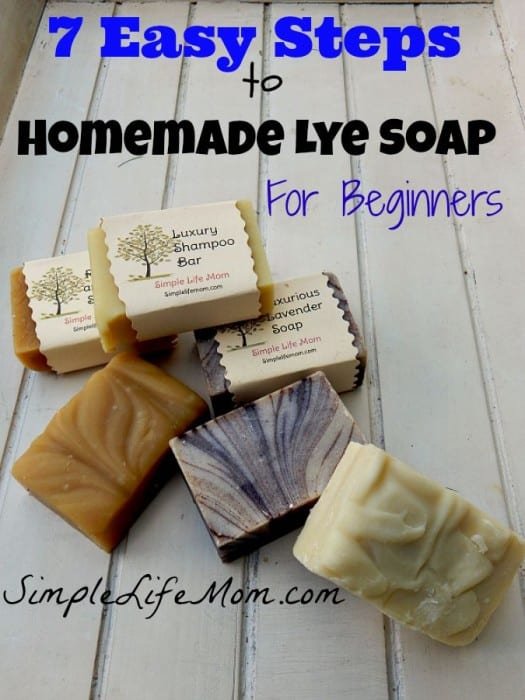
Of course you can always try 100% Natural Soap bars from my Shop as well.
How to Make Homemade Soap
Before we get started, I wanted to let you know that I have 2 paperback soap making books available in book stores.
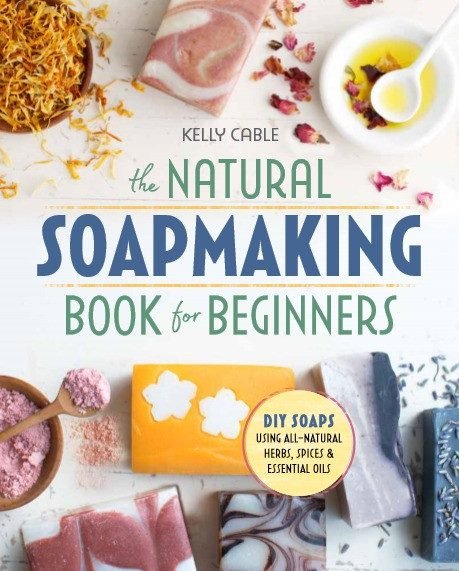
Natural Soap Making Book for Beginners – cold process, natural coloring, herbs, hot process and melt and pour explained, plus so much more. VERY thorough.
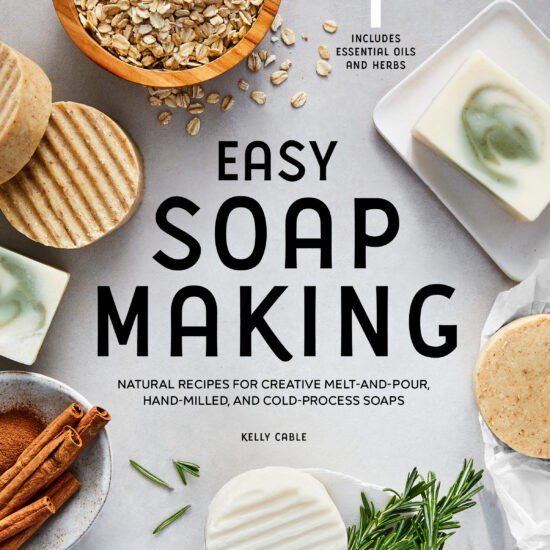
Easy Soap Making – melt and pour and hand-milling, with some cold process. Simple recipes and steps.
Quick Summary:
Soap making can be boiled down to these 10 steps:
- Weigh and melt your fats in a large pot.
- Weigh the lye in a zip close bag and weigh your water into a plastic container. Go OUTSIDE and slowly pour lye into container of weighed water and stir with stainless steel spoon. Important!!! Don’t pour the water into the lye. Pour the lye into the water (more below)
- Prepare mold (add wax paper if necessary)
- Weigh essential oils according to recipe, set aside.
- When fats and lye both reach about 90° F, pour lye into pot of oil and stir.
- Use stick blender on and off for 5 minutes, stir by hand 5 minutes, etc. on and off until trace.
- Add essential oils and any natural coloring agents or textures, stir very well.
- Pour into mold and insulate for 24 hours.
- Remove from mold and cut.
- Let air out and harden. Use after 4-6 weeks.
Big Tip: Think of your ingredients in 3 categories
- Fats and oils. These go in one pot. These are things like lard (pork fat) or tallow (beef fat), coconut oil, olive oil, and palm oil. I don’t like to use crisco or vegetable oil because of their soy content, pesticide residue, and preservatives.
- Lye crystals and water. These will be combined to make “lye water” in a separate dish from your fats and oils. If you are trying a milk recipe you will often add it here in place of some of the water.
- Essential oils and other Ingredients. These will be added at the last-minute for smell, color, or texture. This also includes honey and salts.
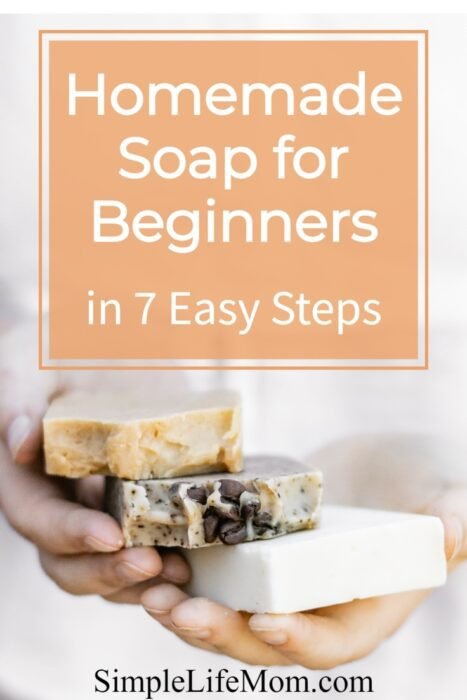
Tools
You will need the following items:
- Stainless steel pot (no iron or aluminum)
- Stainless steel spoon
- Plastic spatula
- Hand mixer. A stick blender helps it come to trace faster.
- Zip close bag
- Bowls to measure oils
- Container dedicated to lye water (I use an old plastic container)
- Digital scale that weighs in ounces to the tenths place (e.g. 2.3oz)
- Thermometer (a cheap candy thermometer works fine)
- Mold to pour soap in
- Wax paper to line mold if necessary
- Towels for insulating mold.
7 Easy Steps to Homemade Soap for Beginners
Step #1: Fats and Oils

Different fats add different qualities to your soap.
For example, coconut oil will help create a lather, while castor oil is great for bubbles.
The first thing you need to know if you’ve never made soap is that your ingredients are weighed, not measured. And they need to be precise! Of course, the smaller the batch, the more precise you need to be.
I purchased a relatively cheap digital scale (like this one) that lets you set your bowl on the scale and reset it to zero so that you are only measuring the ingredients and not the bowl (less math). Use a rubber spatula to scrape all the little bits into your large stainless steel pot. Be precise.
Step #2: Lye and Water
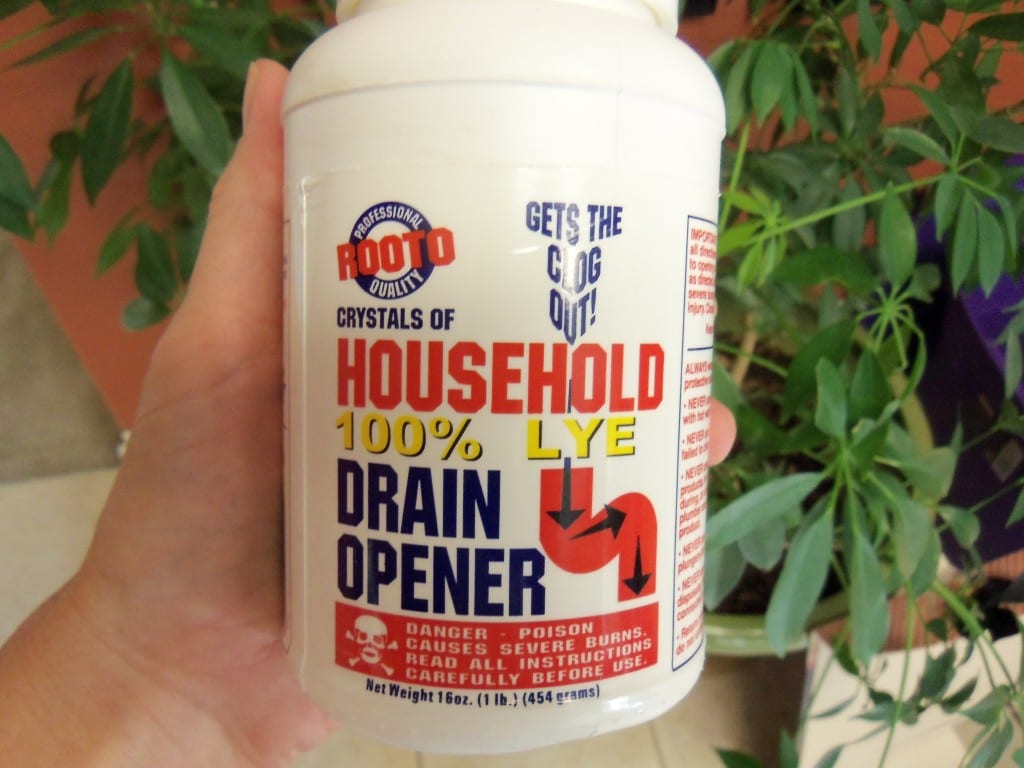
Where to Get it:
I searched and searched for lye at a local store. Apparently it’s also used for making some type of illegal drug as well, so a few people gave me weird looks and asked why I wanted it. Really? Anyway, I found it in the plumbing section of an Ace Hardware store for a little over $3 for 16 oz. You have to get the pure crystals, not some liquid concoction!
If you don’t want to search everywhere you can get some on Amazon.
What is It:
Lye’s real name is sodium hydroxide. It is originally derived from ash (We can easily gather a different form that makes a softer soap called potassium hydroxide or potash from firewood ashes, but it needs to be filtered through straw with water. Some of our great grandparents made soap this way).
Lye will chemically react with water. The chemical reaction produces an invisible gas and heat, blasting your lye water mixture to a whopping 200 degrees Fahrenheit, depending on your starting water temperature.
Can you make soap without lye?
Remember that lye is needed to turn the oil molecules into soap. Without lye, the oils will remain oils. The chemical reaction that occurs when lye touches oils is fascinating and necessary.
No lye = no soap.
Anyone telling you that you can make soap without lye is probably promoting melt and pour. Melt and pour is a fun craft, but it’s not soap making. And you are using soap that someone ALREADY used lye in for you. Maybe that’s what you need because you have children and pets and just don’t want to mess with it. That’s fine. Try melt and pour first to get used to the process.
Safety:
Don’t be afraid of lye. You probably have bleach, toilet cleaner, and other chemicals in your house. Lye is no different.
I recommend using safety glasses, a long sleeve shirt, gloves, and a charcoal mask. You cannot use a surgical mask. Those do nothing for anyone. It must be a mask like this one to do any good.
This may seem overkill, but when you breathe in lye fumes it literally takes your breath away. Do not try to hold your breath! I know you’re thinking it. It’s just not worth the risk of breathing in the fumes. Those fumes will go away after 2-3 minutes.
Also, later when you blend the lye with the oils some tiny bits can splash up onto your arms and begin to burn you. Don’t be scared though! Just keep the kids out of the kitchen and treat it like you would bleach – you don’t want it on you. It doesn’t burn right away. It will make your skin red and begin to itch. This will be your indicator that you have a splash on you and that you need to wash the area.
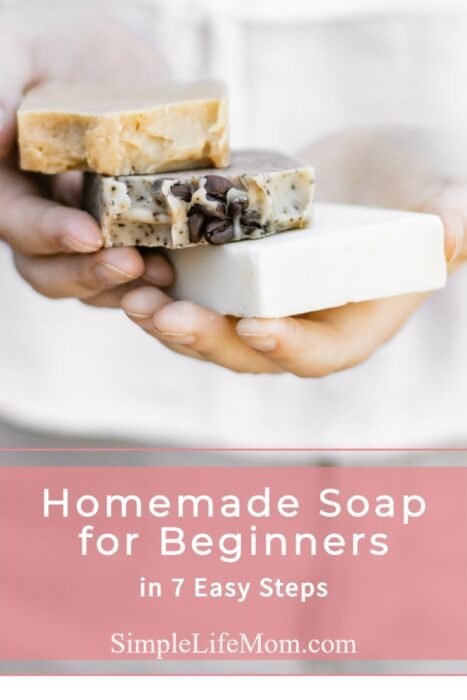
How to Use it:
I measure the lye into a plastic bag and the water into a medium sized plastic container.
This helps me to remember to pour the lye into the water and not the other way around. If you pour water into lye, the lye to water ratio is so high that the lye can explode (so I’ve read…and I don’t want to test it).
Always go outside and pour the lye into the water and stir. I even did this in a snow storm once (I should have taken a picture). Make sure the lye water is not in a location that can be touched by pets or children!
Once the lye is dissolved, there are no more fumes. This only takes about 2-3 minutes.
After it is all dissolved you can take it inside very carefully. If it gets on your skin it will feel itchy long before you notice the damage it is doing. It will burn your skin if you don’t wash it off.
Lye also reacts with aluminum and iron. Do not use utensils with those ingredients or the lye will slowly eat away at them. Use stainless steel, plastic, or glass.
#3 Temperatures

Temperatures are important!
After all, you want a chemical reaction to occur. The fat molecules need to be blasted open by the lye molecules, converting both molecules into soap.
You will have to heat up your fats in order to get them melted and uniform, and then allow them to cool to around 80-90 degrees Fahrenheit. I try to have my oil and lye right around 80-90 degrees Fahrenheit before I add the lye water to the oils.
It can be a bit of a juggle to get both your lye water and your fats/oils to the same temperature. If one is cooling faster than the other, just give it a cold water bath by running some cold water in your sink and placing your pot or plastic container in it. If one is cooling down too fast, then cover it or pace it in a hot bath so it stops cooling.
Be precise and you won’t have to guess about what went wrong. Instead, the only thing you’ll have to worry about is if it’s ready to pour yet or not.
Step #4: Trace

Trace is what it is called when the soap begins to thicken and is ready to pour into the mold.
It leaves a “trace” behind on the top of the mixture. You will usually see the soap turn a creamy color and will feel it get thicker as you stir.
Use a large stainless steel spoon to drizzle a little on top of the mixture. If it sinks right in, then it’s not ready. If you look at it with the light reflecting off of it and you can see the drizzle leave a little path on the top, then it has gotten to light trace. If it starts to become like thick pudding then it is at full trace and needs to be poured quickly! You don’t want it setting up in your pot.
Step #5: Essential Oils
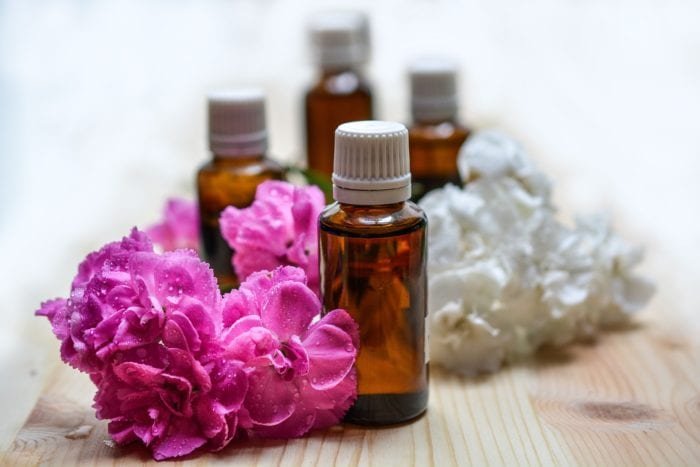
As recipes get more complicated, there are more things that might be added in at the last minute. This is after you combine the lye water with your oils, it has come to trace, and it is ready to pour into the mold. If you want true oils and not synthetic chemically made smells, stick to Essential Oils. For more information on the differences see my article on Essential Oils vs Fragrance Oils.
Most recipes will give you the amount of Essential Oils to add that’s good for that size batch. Though, this can vary depending on the essential oil used since some are more potent than others. Use it as a guideline, and then after you stir it in see if you can smell it. I don’t like my soap to have a strong scent, but others do. Use what you like!
Step #6: Pour and Insulate
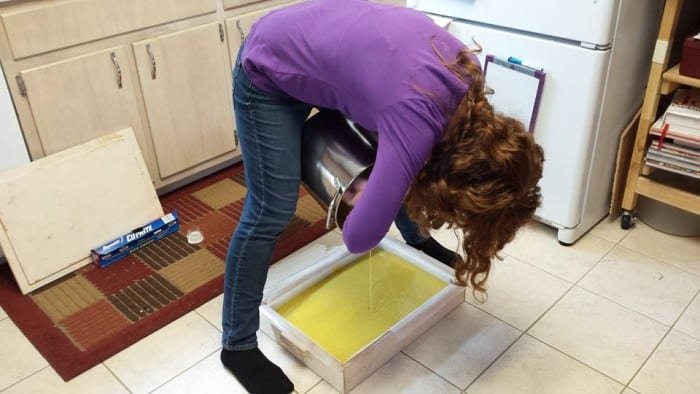
You have to have something to put it in for it to set up. Want some frugal ideas?
You can use:
- a plastic container, but I had a hard time finding one that wasn’t rounded or ridged on the bottom or sides.
- a cardboard box
- glass container, but these are harder to get your soap out of (I don’t care what people claim about putting it in the freezer)
- PVC pipe – nice round soap
- Pringles cans – peel off the outside when it sets.
- Small wooden planter
- Make a wooden mold
- Buy a Wooden Mold
- Buy silicone molds
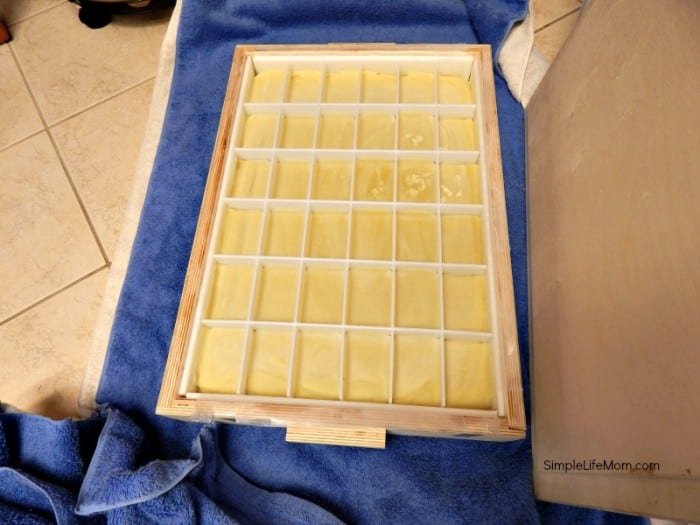
I was worried about getting my soap out of my plastic container that I used with my first batch and I lined it with plastic wrap. I’ve seen pictures where people have done this.
It did not work out well!
Even though I tried to get out all the wrinkles, I apparently did not and it was folded into the soap where if I pulled, it tore and was stuck so that I had little bits of plastic inside my soap. It also made tons of wrinkles! My favorite liner? Beeswax Paper! Works great! You can also use regular wax paper. Parchment has a polyurethane coating, which is why I prefer a known wax.
Once you’ve lined your mold with wax paper (if necessary) and poured your soap into it. Give it a slight jiggle to make sure it’s all settled evenly and that all bubbles are out. You’ll want to place it on a very even surface for the first 24 hours or you will have slanted soap.
Cover in towels to help keep the heat in (remember that chemical process).
If your house is 75 degrees Fahrenheit or above then you do not need to insulate. If it is below, then use towels or blankets, de[ending on how much below 75 it is.
To insulate, after it is poured into a mold, place on a blanket (or towel if it is a small batch), and place blankets all around it. After the 24 hour period check to see if it is set. If set, you can take your soap out of the mold and cut. if it is still too soft to remove (which happens more often in silicone molds), then leave it for another 12-24 hours before checking again.
#7 Curing and Storing
Lye soap is not ready to use at once.
The lye has not finished converting the oil molecules into soap molecules. If you use it right away, it may quite possibly burn your skin. The longer it sets, the more mild it will get, the harder it will get, and the longer it will last.
Technically, the saponification process finishes after around 48 hours. But your soap will be so soft that it will disintegrate in the shower within a few days. Let it cure and harden.
Cut your soap and let it cure for 3-6 weeks, turning occasionally so that all sides dry out.
Where to put it?
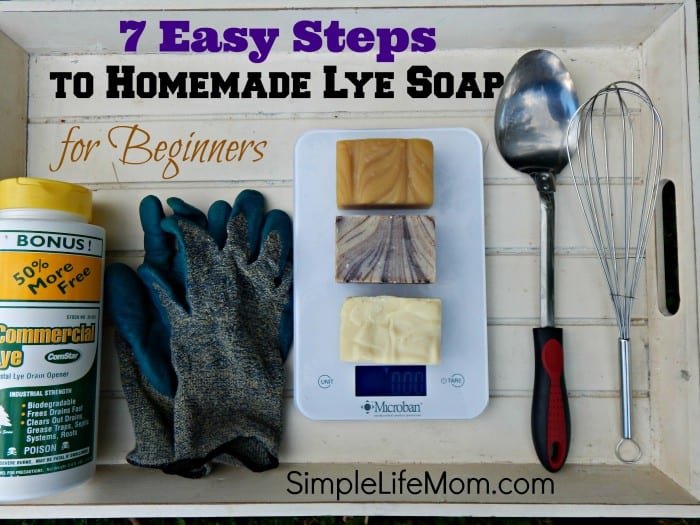
Over time your essential oils will grow fainter within the soap. If you blend top note essential oils with deep notes then it will last a lot longer. Otheriwse, you will notice the scent fading within 6 months or so
I use a plastic storage bin with drawers like this one. This way, you can semi cover them, but leave the drawer cracked open a bit for ventilation while they continue to cure.
You don’t want to leave them where there may be get much moisture or they will end up with mold over time if you have herbs within them (and the oils will not last as long. A nice cool dry place is great.
Need Recipes? Check out my Homemade Soap Page for lots of great resources!



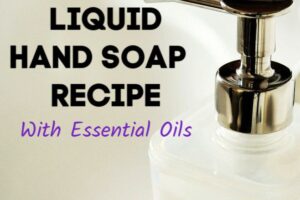
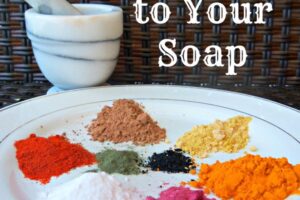
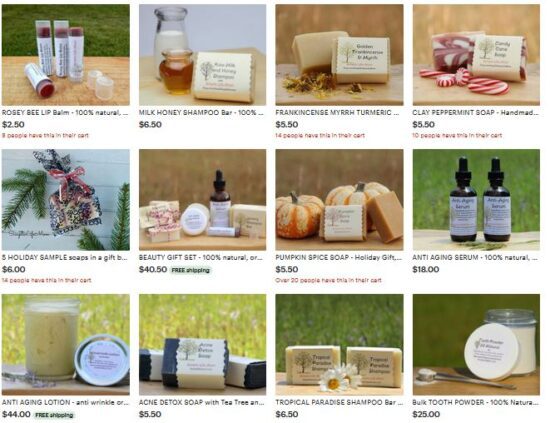
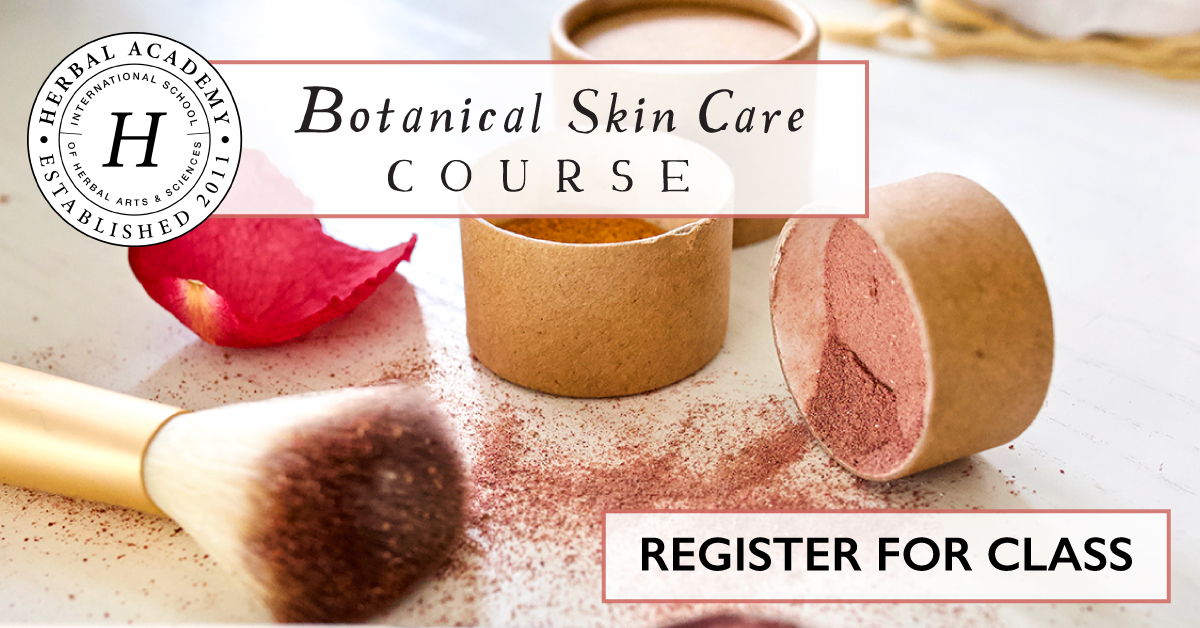
95 Comments
Leave your reply.